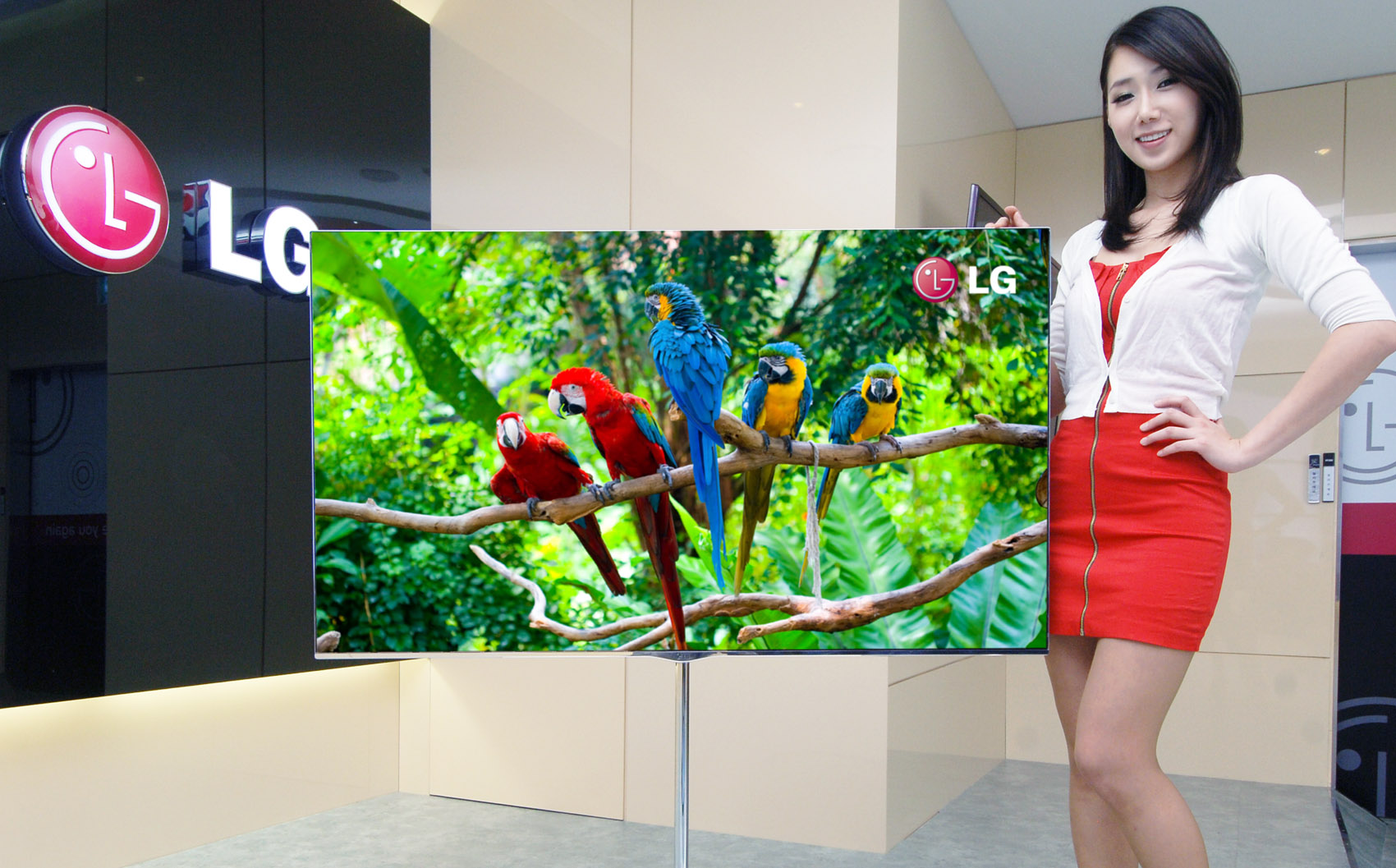From plasma to OLED, keeping up with display technology

The OLED market is expected to grow by 15.2 percent per year for the next six years, reaching close to $49 billion by 2023, from $16.5 billion in 2016.
According to a report by Research and Markets, this growth is driven by the adoption of LED displays in smartphones, government support for OLED lighting research and positive customer experience.
The development of OLED underscores the staggering pace at which screen technology moves. This adds complexity for those who want to implement digital signage but are not sure how they should direct their investments between plasma, LCD, LED and OLED.
First, back to the basics: Plasma screens are an older, and to a certain extent less preferable, solution to the newer technologies of LCD, LED, QLED and OLED models, according to Dave Haar, director of business development at Brawn Consulting.
Plasma, which uses electronically charged ionized gases to produce color, does have some positive attributes, such as bright screens, wide color, deep black levels, a fast refresh rate and they can be produced on larger scales (150 inches). However, plasma screens also run hot, use a lot of power, are relatively thick and have issues with burn in of images.
Don’t bet the farm on plasma – not only is it losing market share overall, it has been discontinued by all of the major manufacturers.
LCD (Liquid Crystal Display) displays are either flat panels or other optical devices that use these liquid crystals in a layer of glass to create images. They use some type of back lighting (LEDs or older CCFLs) as the crystals themselves to do not emit color.
According to Haar, LCD displays have many advantages over plasma and the even older CRT devices they have displaced, namely:
- They’re available in a wide number of sizes
- They use many different applications from computer monitors and smartphones to large format displays and televisions
- They are energy efficient when compared to plasma and CRTs
- They’re thin, light and compact
- They generate less heat and don’t emit electromagnetic radiation
- They run a very large color gamut
- They can be used in video walls because of their small bezel width
- There are an almost unlimited number of resolutions available for this technology
Conversely, LCD displays may have limited viewing angle in cheaper models and problems with back lighting and expressing blacks as black. They also typically have one native resolution, which may cause problems (blurring/stretching) when displaying different resolutions, and some models may have limited color depth.
LED (Light Emitting Diode) displays use light emitting diodes as pixels in creating an image on a display. Direct view LED displays are made up of individual pixels, like any other display device. Each pixel is constructed from a cluster of red, green and blue LEDs and the pixels are arranged into larger tiles, which are connected together to build the full display.

LED displays can be much larger than a single flat panel, provide a seamless image without the bezels present in a videowall and can be customized to fit areas.
LED displays are more expensive per square foot of display area than other technologies due to manufacturing costs; LED displays require a lot of assembly from individual components. One of the key specifications for an LED display is pixel pitch. This metric defines how “coarse” or “fine” the image will be, and thus how close a viewer can stand to the display before the image appears pixilated. Pixel pitch is defined as the distance between two pixels. The distance is measured from the center of one pixel to the center of the next pixel. Where LCD displays are typically measured in the hundreds of nits (350-700 nits are typical), direct view LED displays can compete with direct sunlight, and thus can produce upwards of 6,000 nits.
On the positive side, Direct View LED displays:
- Can be much larger than a single flat panel
- Provide a seamless image without the bezels present in a videowall
- Can be customized to fit areas
- Are capable of producing 8,000 nits of brightness or more
- They’re more visible in daylight
- They can be built for use outdoors without an enclosure, mounted directly to a sign or structure, they have a wide viewing angle and be seen from greater distances than other technologies
- They last longer and are more durable.
On the con list, LED Displays typically require special mounting as they are heavier than LCD panels, are more expensive, most require more power outlets, and special attention needs to be paid to cooling requirements and airflow.

The OLED market is expected to grow by 15.2 percent per year for the next six years.
OLED (Organic Light Emitting Diode) screens have a film of organic compound that emits light in response to electrical current to produce colors and images in content. The film is between two electrodes and usually one of them is transparent. This is a relatively new technology being commercialized in the AV space and used in TVs, digital displays, mobile phones, gaming devices and tablets.
OLED displays may cost less in the future as the technology develops, allowing the production of a cheaper substrate. They are also lightweight and flexible, have a greater contrast ratios and viewing angles than LED or LCD displays, and consume less power than LCD displays when using black backgrounds.
However, OLED displays have much shorter lifespan because of organic nature of materials used in construction. There is also a poorer color balance that degrades over time, and the screens are prone to burn in, are very susceptible to moisture damage and use more power when using white backgrounds to display images.
Finally, QLED (Quantum Dot) displays use quantum dots to produce monochromatic red, blue and green light. These displays are similar to OLED in that light is produced directly on each pixel and support large, flexible displays. They have a much longer shelf life as they quantum dots would not degrade nearly as quickly over time. QLED uses existing technology (LCD), but replaces the liquid crystal substrate with quantum dots, which enable wide color gamut, higher brightness, and increased dynamic range by providing LCDs with an ideal light source.
The quantum dots are nano-sized crystal particles of phosphor, which can be tuned to produce specific wavelengths of light by varying their size. The quantum dots are embedded into a film that can replace the diffusion film traditionally used with LCD backlights. The white LEDs in a quantum dot based LCD are replaced with UV blue LEDs. The blue light combines with red and green light produced from the quantum dots to create the illumination used by the LCD.
QLED displays produce a high dynamic range producing deeper and more vivid reds, greens, and blues, and can show more shades in between, deep shadows show more details. These displays also allow LCD displays to produce a color volume equal to or potentially greater than any of the other display technology currently available.
Which technology works for what?
Haar believes LCD, QLED and LED technology that is available today works best for restaurants, as they cost significantly less than OLED. For large outdoor billboards, LED is the brightest and most versatile option.
Despite the high costs of OLED, it’s growing for a reason.
“I’m cautiously optimistic (about OLED), until its issues with price, burn in, moisture and lifespan are addressed,” Haar said. “QLED and LCD are more acceptable, tried and true solutions for today.”
Still not sure how to approach your display technology?
“It boils down to the content you will be showing, the location you are showing it in and the budget you have for the equipment,” Haar said. “OLED has some very special applications, but is no way in the forefront of designers’ minds.”
What is on the forefront of digital signage for 2018? According to Haar, consolidation in the Content Management Software community, as giant players such as Amazon, Google and Microsoft continue to develop solutions to make digital signage even more ubiquitous.
“Also, customers will expand uses of digital signage to include more information dissemination within their organizations and to their clientele,” Haar said. Players in the digital signage space will continue to need education for themselves and their customers to understand that the success of every deployment is determined NOT by the equipment or software a customer uses, but rather by their content strategy and methods by which they determine whether they are getting the results they expected or not.”






